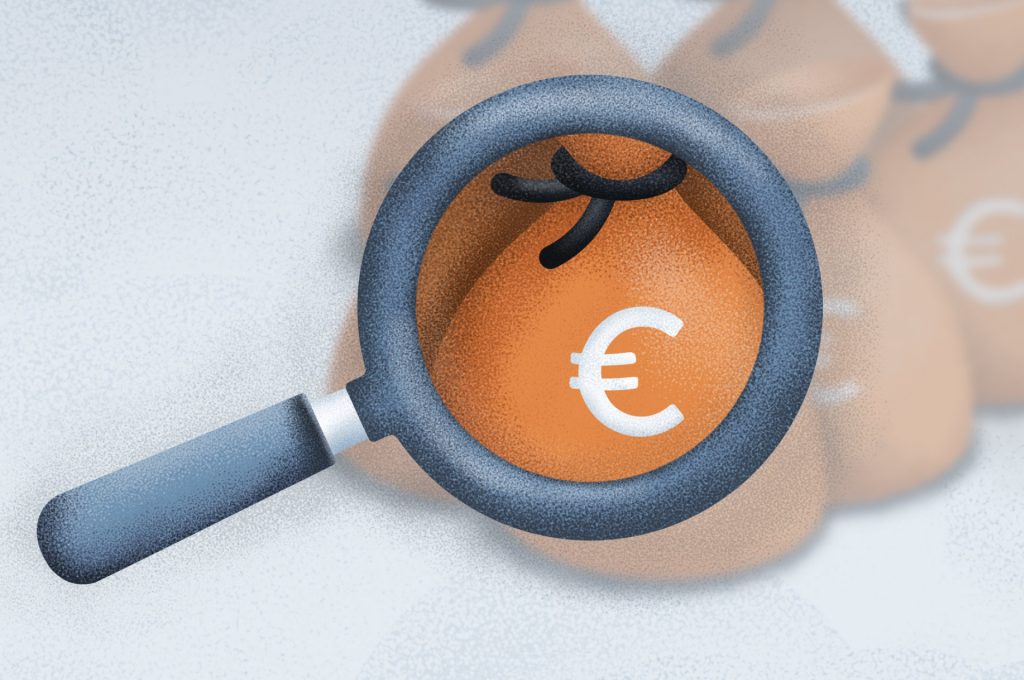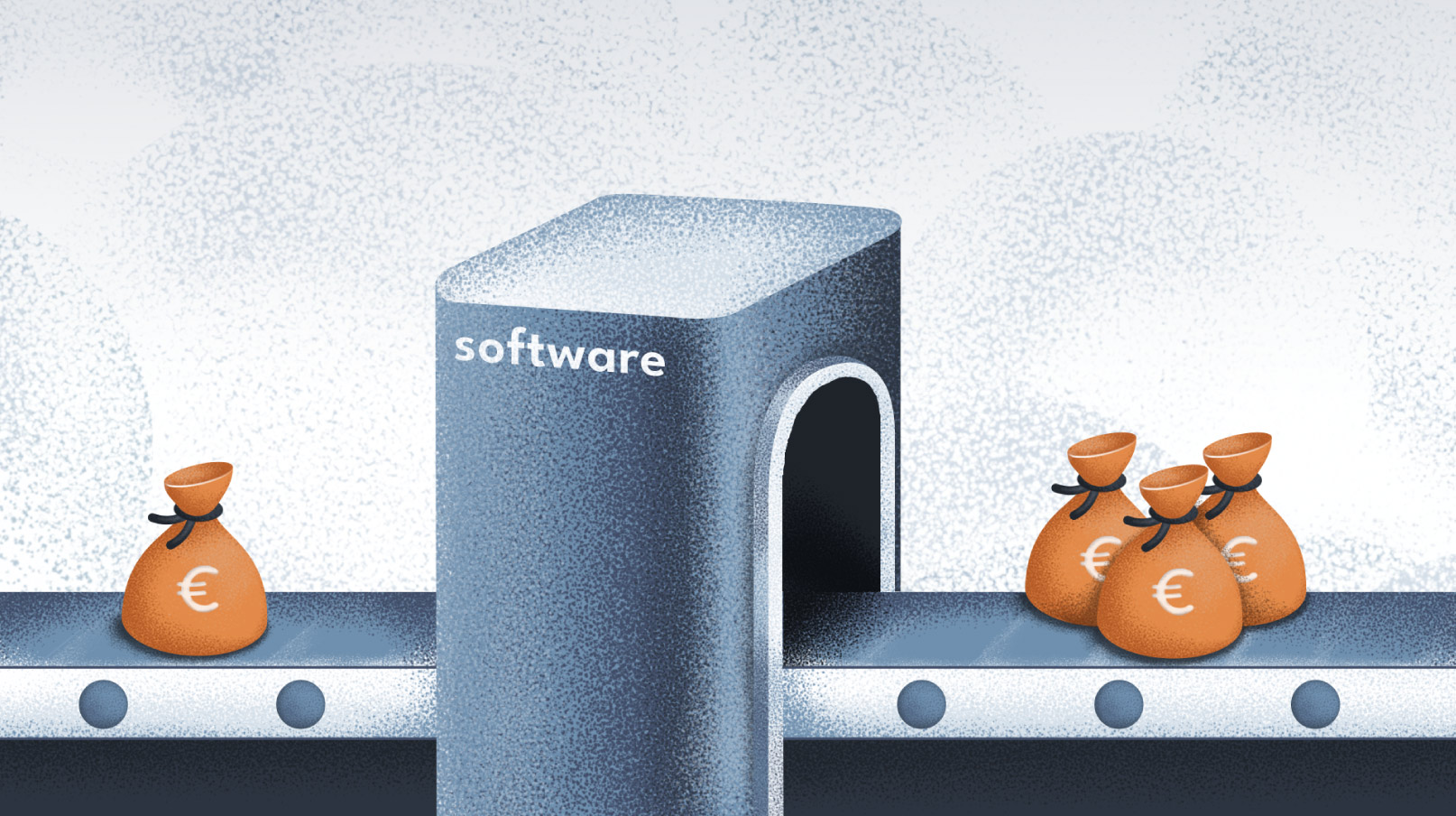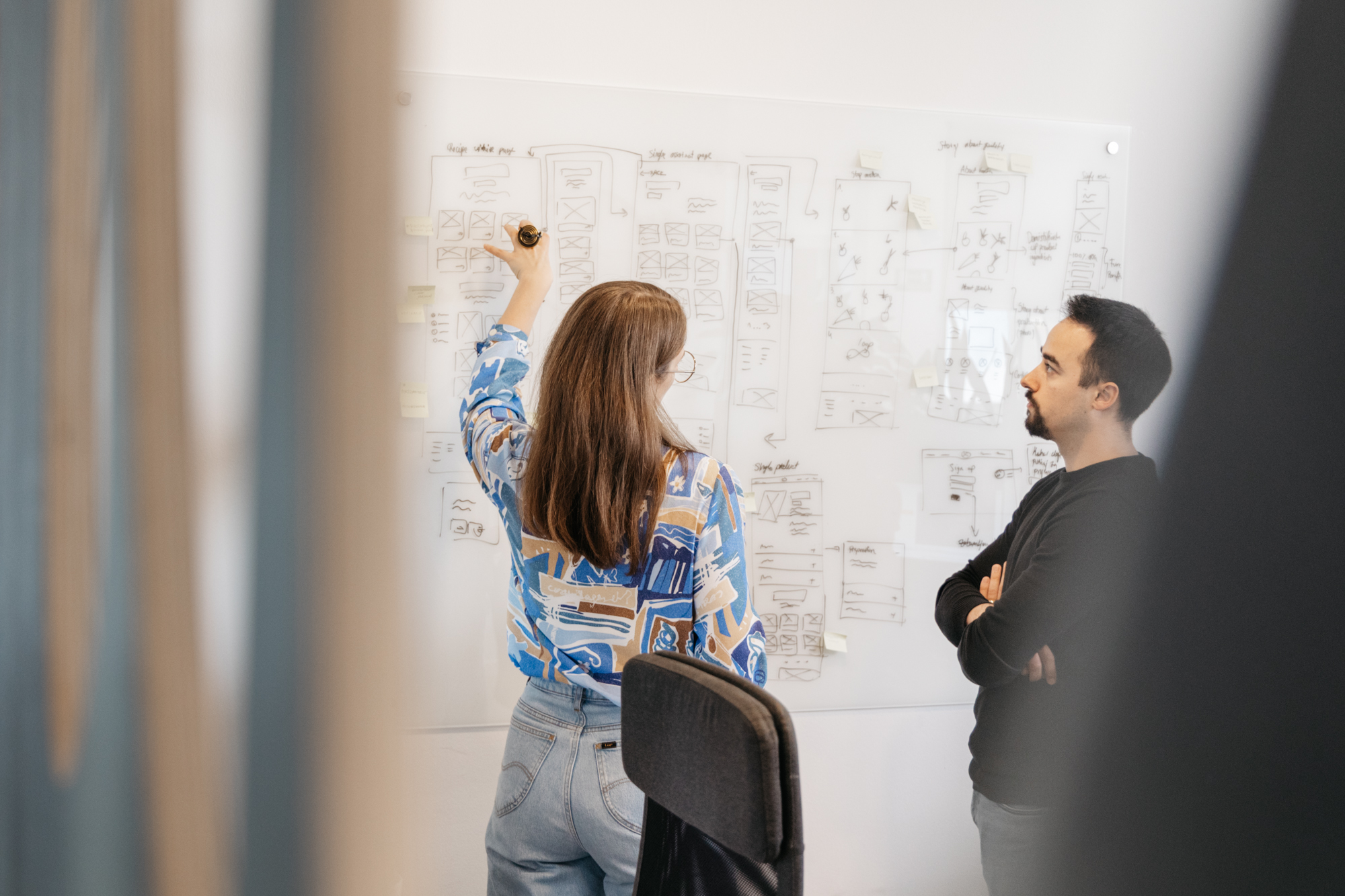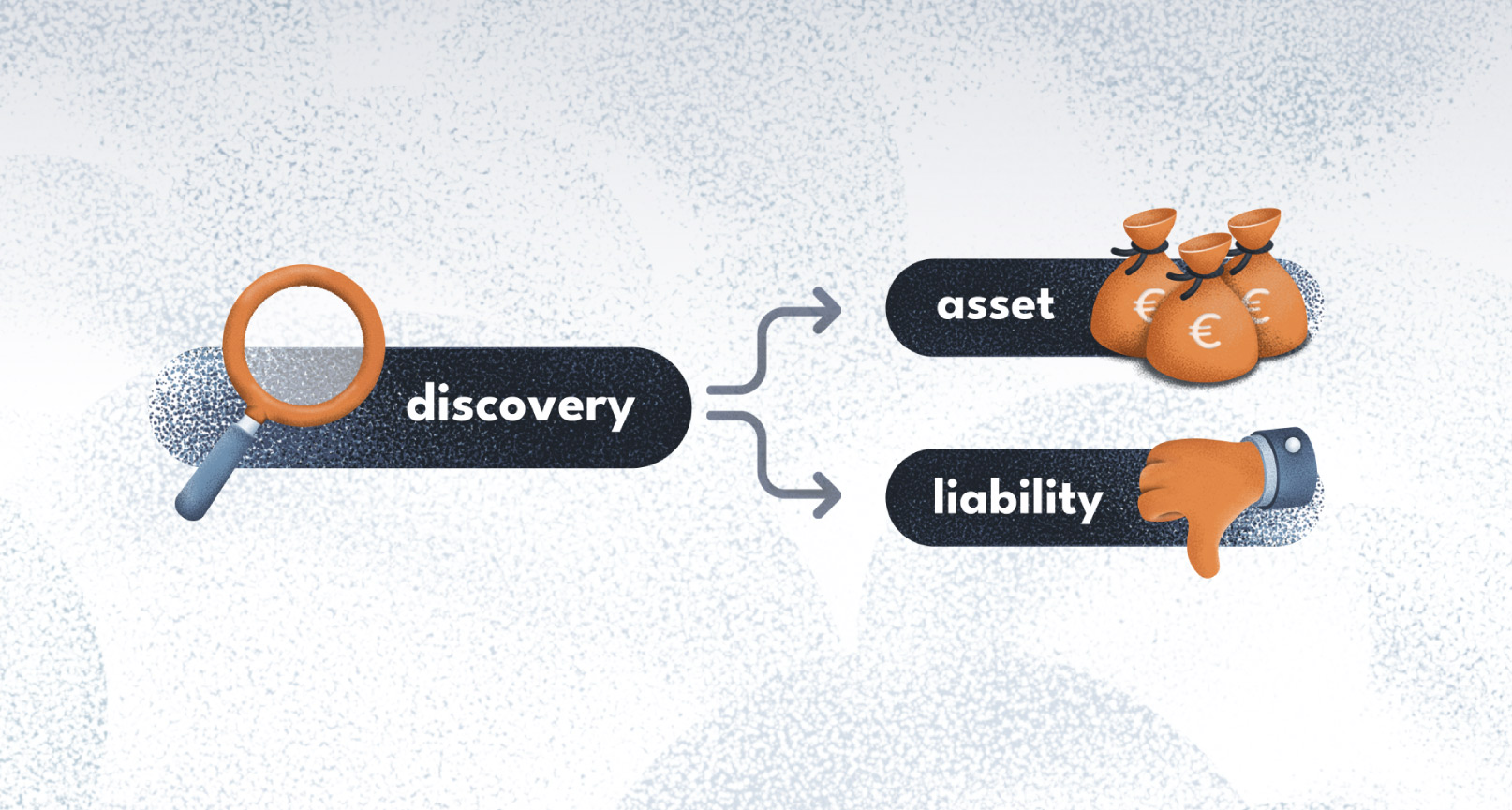Profits or Losses? Time to Discover

01 INTRO
Assets make you money.
Liabilities cost you money.
Software can be both.
Which one you’ll get, depends on what you do in the Discovery phase of the project.
Discovery, as the name suggests, is a research based phase which comes at the beginning of the project. Your chosen software development partner takes you through this phase of discovering and deciding what kind of software product you are building.
Is it something that everyone loves and that will make you money?
Or is it something that no one will want to use and that will cost you money?

The money making software
Why did you choose to invest in software?
Either to do your business more efficiently or to sell more. In both cases, the goal is to increase profit.
The first step on that way would be to identify what is bringing you money right now. Is it something that you are doing right and you would like to do it 10 times faster? Or is it something you want to do differently and software can enable you to do so?
Software has the power to amplify outcomes significantly. Hence, it is crucial to exercise caution and avoid multiplying poor decisions.

02 KEEPING USERS HAPPY
Frustrated user: costly liability
Picture this: You are in the process of developing a brand new software product. Finally, it’s time to implement all these cool features that will make your life easier. Life seems really good at this point. But hey – there is a lot of features and software gets more complicated with every implementation.
And it’s all downhill from there.
People start complaining they can’t do their job. They start asking someone else for help with the software. Suddenly, it’s five people trying to figure out how to do a simple thing in your fancy new software.
So, let’s take a few steps back and return to the Discovery phase. This is the time when you need to start thinking about your users.
Your business is anything but simple. We get that. But the thing with building a custom software is that you can adjust it to exactly match your business workflows.
When we made a custom software for T-com, we spent the majority of time in Discovery phase thinking about who will actually use our software.
It became clear that there are essentially two types of users:
- Some want to see everything and perform every action that software supports.
- Others just need to do a couple of simple actions and that’s it.
Early in the Discovery phase, we made a decision to have our user interface adjust to the user’s role. Some users spent their whole day monitoring everything and performing complex actions. Other users made a few clicks and they were done.
What did the users say? Immediately they started talking about other areas of their jobs that we need to add to our app and make their lives easier.
User satisfaction check, and results? They were even better.
Two weeks’ worth of work can now be accomplished in just a single day.
The software helped people do their jobs and then got out of their way.
Asset scenario
By prioritizing users during the Discovery phase, we made informed decisions that transformed T-com’s software into a valuable asset. The resulting time and cost savings, particularly at the scale of a telecommunications company, are truly remarkable.
Liability scenario
If we didn’t make adjustable UI, this complicated software would surely be a source of frustration. At the scale of a telecommunications company, such a solution prevents the squandering of thousands of hours each day. Without this adaptability, the software would undeniably become a significant liability.

03 MAKING A PROFIT
But hey: a happy user can also be a liability 😨
That’s right. You can go over the board with making the user happy. Don’t get us wrong, user needs to be happy. But it is equally important to strike a balance with profitability.
Here is an example.
Let’s say you are selling subscriptions for your service for 10,00 EUR. It costs you 8,00 EUR per user to run the service. This means you have 2,00 EUR profit from every subscription sold.
Now, as you venture into developing mobile applications for your product, you understand the importance of catering to user preferences. You figure out why users like you and you give them more of that. Everything is going well.
You aim to simplify the subscription process for your users, making it as effortless as possible. To achieve this, you decide to incorporate in-app purchases into your mobile applications.
If your software development partner doesn’t stop you there during the Discovery phase, you will be in some trouble down the road 😅.
The thing is, Apple takes 30% from every purchase made from your iOS app.
If we do the math, you are selling your subscriptions for 10,00 EUR. It costs you 8,00 EUR per user to run the service. And Apple takes 3,00 EUR from every subscription that is bought through your shiny new app.
In this case, you’d be losing 1,00 EUR per subscription sold from inside your iOS app. And all you wanted was to make it simple for users to buy from you.
To make things even worse, this functionality would cost more to implement, so you’d have to pay extra to your software development partner.
And they would do a great job with it – that even your old customers would go and buy subscriptions from inside the iOS app. Which will result in you losing even more money.
Asset scenario
During the Discovery phase, you test your ideas and receive feedback from your software development partner. They tell you that in-app purchase is not a good idea, because it’s not always beneficial. In certain cases, Apple might require in-app purchases for iOS apps, but there are strategies available to mitigate financial losses.
Instead of in-app purchase, you develop a different feature that your users will hopefully adore. With the help of your software development partner, you can now create a fantastic app. Users are loving the app and they visit your website where they can easily purchase subscriptions (you earn 2,00 EUR a pop), leading to increased sales and continued profitability.
Liability scenario
Unfortunately, your software development partner fails to inform you about this, resulting in you paying for unnecessary in-app purchases and losing money on each subscription sold.
It becomes clear that your new and appealing mobile app is a liability in this situation. Not only do you face expenses for an unnecessary feature, but you also continually lose 1,00 EUR on each subscription sold.
The most frustrating aspect is that as your app performs well and gains more user love, your financial losses increase.

04 CONCLUSION
Measure twice, cut only once
Discovery phase is the perfect time for you and your software development partner to think long and hard about the software product you are building.
Everything needs to make sense and every decision needs to take you closer to your ultimate goal: To make more money.
Will your software become an asset that makes you money, or will it become a liability that burns your money fast? This is often determined long before you even start to design and develop your software.

Subscribe to EnterWelt
All the advice you get while working with us. Now available in your inbox once per quarter.